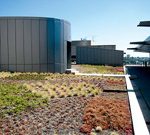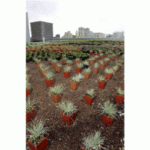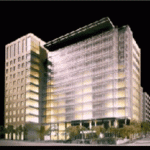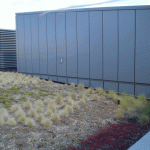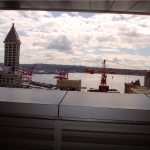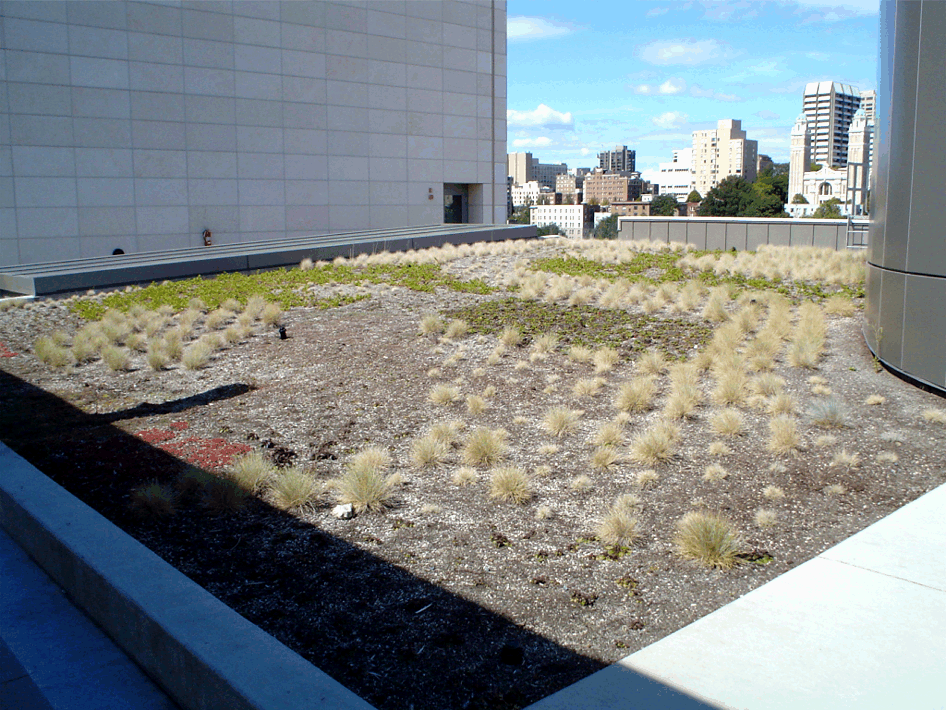
Additional Resources
Download the City of Seattle Case Study PDF here. Read the November/December 2004 Environmental Design + Construction magazine article “Sustainability With a View” by Charles Cronenweth. See Linda S. Velazquez’s August/September 2004 Sky Gardens ~ Travels in Landscape Architecture column about Seattle and Washington state here.
Completed in the fall of 2002, the Seattle Justice Center was the first municipal greenroof for the city. One of the City?s goals for the new building was to build a quality structure that would last at least 100 years. The Silver LEED certified building is located adjacent to the Key Tower, Bank America Building and Seattle City Hall. Directly across from City Hall, the 12th floor terrace of Seattle?s Justice Center offers views of its own garden roof, with an intricate planting design guided by an image of sunlight reflected in a shallow streambed. Both municipal buildings represent important environmental and sustainability components in Seattle?s new Downtown Civic Campus, a project implemented under the city?s new Sustainable Building Policy, as part of the city?s Environmental Management Plan. Potential jurors from the jury assembly room and occupants of neighboring hi-rise buildings will be able to view the roofscape, so an attractive view was very important to the design team. Both greenroofs require minimal maintenance and are estimated to reduce annual storm water runoff by 50 to 75 percent. This, combined with both building?s extensive water harvesting systems, helps to reduce the impact on local stream watersheds and salmon habitat. Lucia Athens at Seattle Public Utilities was part of the effort to incorporate monitoring into this green roof.
The greenroof consists of a multi-layered waterproofing membrane integrated with a 6″ deep engineered soil support system that includes insulation and drainage/moisture retention elements, all part of a total assembly supplied by American Hydrotech. The Justice Center used a custom mixture of nitrolized pine bark, sand, pumice, nutrients and peat.Matthew Suhadolnik, ASLA, of SvR Design Company says, “The landscape design for the Justice Center garden roof was guided by an image of sunlight reflected in a shallow streambed. Flowing, naturalistic patterns have been created using groundcover plants of varying textures and in subtle shades of blue, gray and green. Sheep fescue placed throughout the plantings provides a unifying silvery-gray element representing ripples in a shallow, slow-moving stream.? Many of the plants used are native to the area, such as Point Reyes Creeper and Barren Strawberry and others included carpet bugle, bearberry cotoneaster, potentilla, sheep fescue, woolly thyme, creeping thyme and sedum stonecrop. Some of the plants had to be replaced perhaps due to the fact there was initially not enough watering for establishment – the roof was retrofitted with drip irrigation after the fact.Peter Steinbrueck, reporting for The Seattle Times on January 13, 2005 says the city’s initial investment is paying off – “A 2003 study, commissioned by Seattle’s Office of Sustainability and the Environment, revealed the Justice Center is saving as much as $148,000 each year due to its green roof.”
 Greenroofs.comConnecting the Planet + Living Architecture
Greenroofs.comConnecting the Planet + Living Architecture
